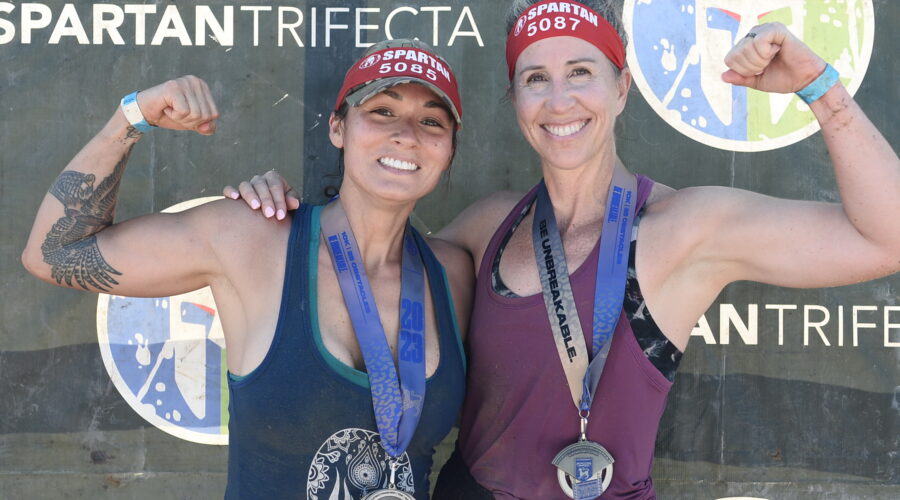Today I’m going to cover how to build muscle. This process can feel quite complicated and overwhelming but my goal is to make it less confusing with this no nonsense guide!
First, let’s introduce the 3 big concepts for how to build muscle, which are workouts, nutrition, and rest. These are the key ingredients to building muscle. However, it can get a little confusing when you are trying to figure out things like, “what type of workouts build muscle?” Or, “how much protein do I need for building muscle?” And obviously going to the internet or social media is a dumpster fire of conflicting information. As always, my goal is to break it down and take it back to the simplest science possible.
Workouts for Building Muscle
If you want to build muscle, your workouts need to involve resistance training. By resistance training, I mean lifting weights. This is the best way to grow muscle. Muscle growth, or hypertrophy, occurs when muscle fibers sustain damage through exercise and repair themselves, growing larger and stronger in the process. These three factors make up the muscle growth process:
- Neuromuscular enhancement: Lifting weights first triggers adaptations in your nervous to muscular system connection. This enhances efficiency and coordination, which lays the foundation for muscle growth.
- Muscle damage: Microscopic tears occur in muscle fibers during resistance training, prompting repair and growth.
- Muscle repair: After you inflict tiny microscopic damage to your tissues, your muscles go into repair mode, where they take bits of proteins (amino acids) and use them as building blocks to patch up the holes.
While these concepts are easy to understand, the magic glue that pulls it together is consistency. Resistance training repeated 2-3 times a week, for months, is really what builds muscle, combined of course with the proper building blocks. Which brings us to our second key concept, nutrition!
Nutrition for Building Muscle
So as we were saying before, when we lift weights, we are inflicting manageable amounts of damage to our muscles on purpose. In order to repair that damage we need construction materials. Think of protein like the asphalt patches that road crews smash into potholes to make repairs. If you want to build muscle, you simply must have adequate amounts of protein available in your body! How much do you need exactly?
Protein Ranges for Active Individuals
A quick sidebar about the metric system – knowing how much protein you need can be confusing because the most common way to express protein needs is in grams relative to your body weight. We Americans mostly measure our body weight in pounds so before you can figure out your protein needs, you need to convert your body weight from pounds to kilograms, which isn’t hard, it’s just an extra step.
Luckily Google makes this real easy. Simply type in “pounds to kilograms” in your search and you get this handy calculation box:
Next all you have to do is put your weight into the pounds box and click enter and you get your kilograms. So for me weighing 135 pounds, that’s about 61.2 kilograms. Now I can use that number to calculate my protein needs based on my activity levels.
According to the NASM Nutrition Textbook, there are a couple different categories you can reference for decision making.
| Activity Level | Type of Exercise | Protein Needs (g/kg of body weight) |
| None | None | 0.8 – 1.2 |
| Light to Moderate | Cardio | 1.2 – 1.6 |
| Resistance | 1.5 – 2.0 | |
| Moderate to Vigorous | Cardio | 1.5 – 2.0 |
| Resistance | 1.7 – 2.2 |
Calculating Your Ranges
Now that you know what your weight is in kilograms, you can figure out your ranges for various activity levels. Because I exercise at least 3 times a week, with a combination of cardio and resistance training, I would consider myself somewhere in the moderate category and will use the 1.5 – 2.0 range to calculate my daily protein needs. So run both so you know your lower end and upper end, this forms your range in between.
Those equations look like this:
61.2 kg x 1.5 = 91.8
61.2 kg x 2.0 = 122.4
So for me, being a moderately active exerciser, I need somewhere between 92 and 122 grams of protein per day to support my muscle building goals! To keep it easy, I just aim for at least 100 / day.
REST
The third and arguably least obvious component of building muscle is rest. Your muscles don’t grow while you’re at the gym. They grow in the 24-48 hours after you walk out of the gym! It’s during the repair process that the adaptations actually take place. Besides the whole proteins coming in to patch holes, there are also many other positive adaptations that occur at the cellular level. Your nervous and muscular system grow better connections. Your mitochondria (yes, the powerhouse of the cell!) become more efficient. Your metabolism will be slightly elevated during this period as well, as your body is consuming more energy for this repair process before it stabilizes back to normal homeostasis. There are many more benefits that your body gets from resistance training and we’ll cover them more fully in a separate post soon.
To summarize and simplify, you don’t make gains while you’re at the gym, they actually happen after you leave it. So be sure to include rest days into your week when you start a new resistance training program because that’s when the magic happens!
Summary for How to Build Muscle
Building muscle is a process that requires training, nutrition, and recovery. By understanding the principles of muscle growth and applying them consistently, you can achieve your muscle-building goals. Stay patient, stay motivated, and enjoy the process of transforming your body.









































